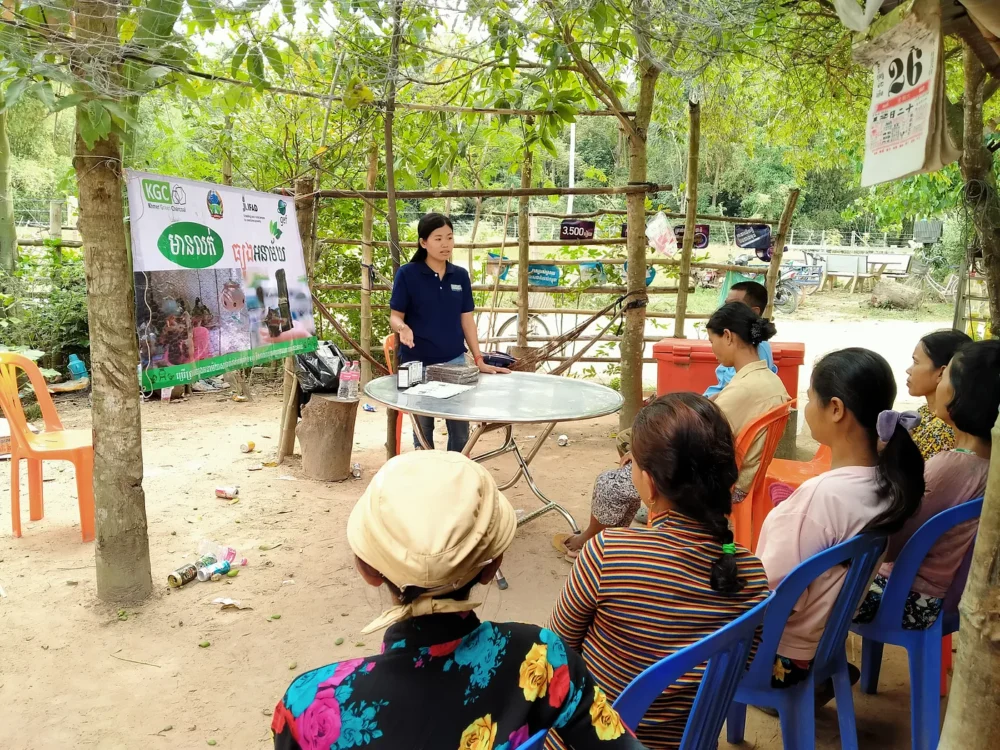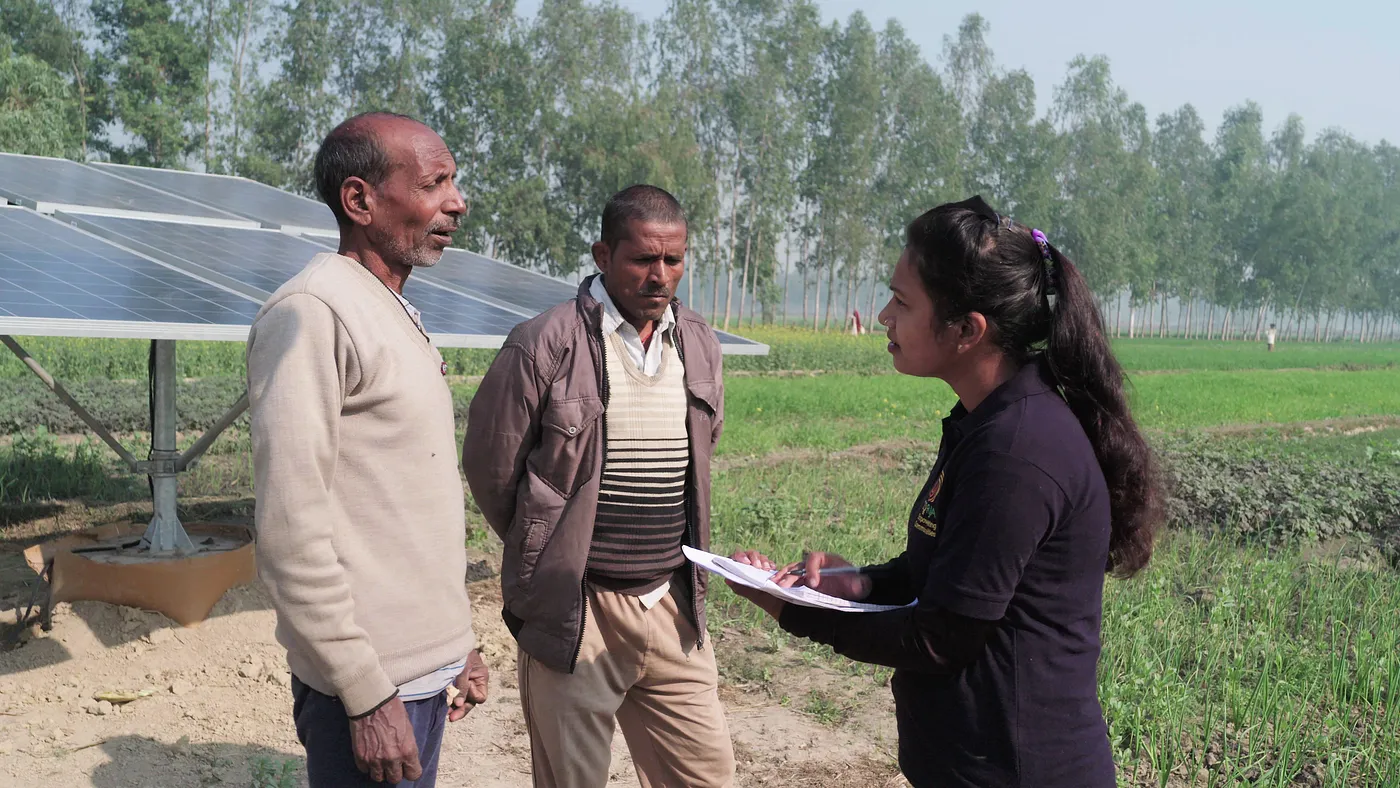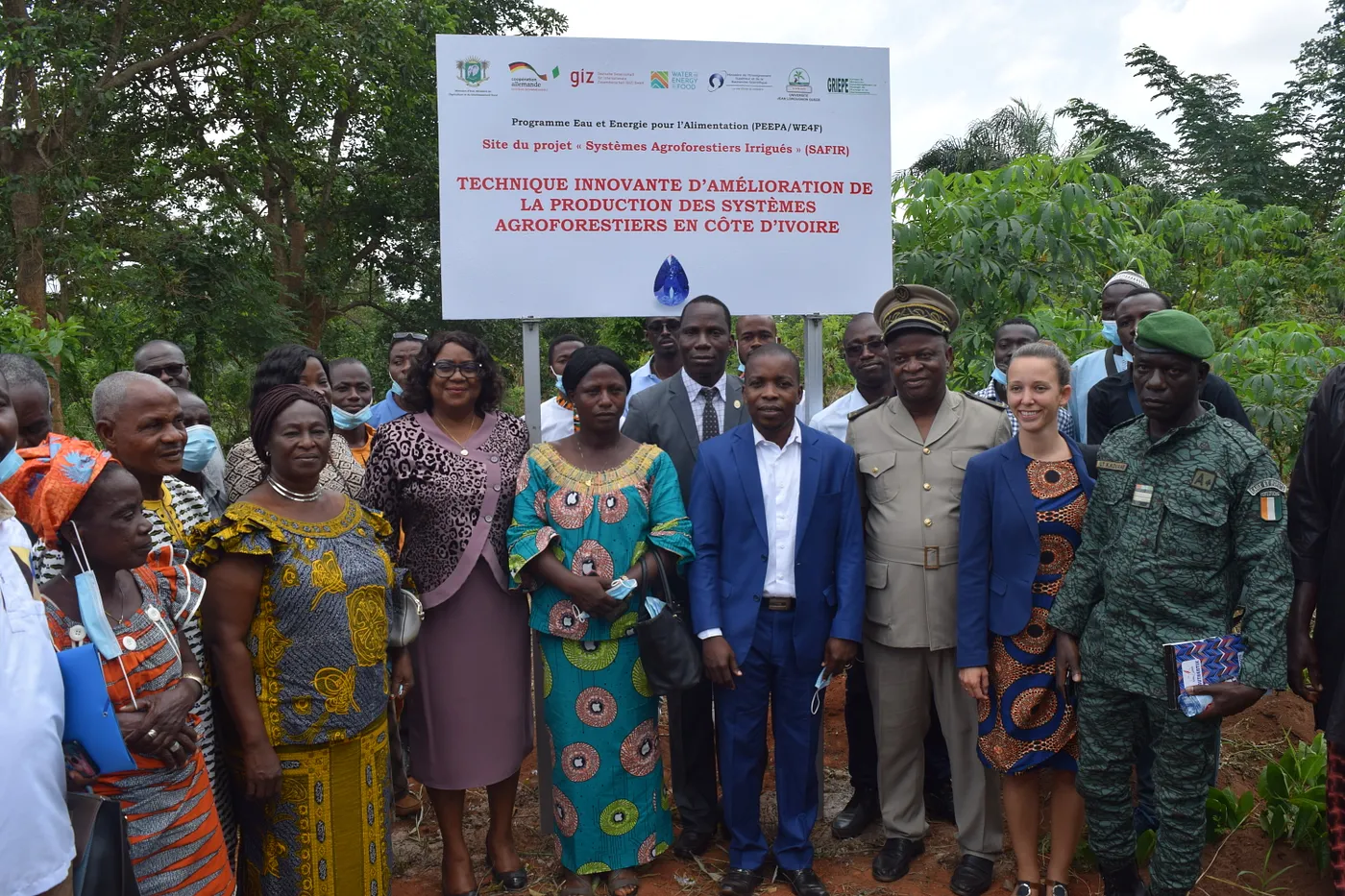Prioritising Water and Energy for Food: A Conversation on the Energy-Ag Nexus
This blog series for the Efficiency for AgTech campaign, entitled “Voices in AgTech”, has highlighted the people and organisations whose work has helped increase awareness of solar-powered agricultural technologies. Hear from Ku McMahan, Team Lead for Water and Energy for Food

By Ku McMahan (Team Lead, Water and Energy for Food Grand Challenge)
This blog series for the Efficiency for AgTech campaign, entitled “Voices in AgTech”, has highlighted the people and organisations whose work has helped increase awareness of solar-powered agricultural technologies in ways that have spurred technology breakthroughs, promoted development along the market value chain, diversified financing options and so much more, in the quest to expand clean energy access. We interview Ku McMahan, Team Lead for Water and Energy for Food: A Grand Challenge for Development in this instalment to the series.
Please tell us about your background and role at WE4F.
Before the launch of Water and Energy for Food (WE4F), I was the Team Lead for Securing Water for Food. I received my PhD in environmental studies and an M.P.H. in environmental health from the University of North Carolina at Chapel Hill under NSF and EPA STAR Fellowships, and received a B.A. in environmental sciences and policy. In addition, I developed a simple, low-cost water quality test for developing countries and emergency situations. Recently, I was a program executive officer for the USAID WA-WASH program in GLOWS and an assistant professor of research at Florida International University.
The initiatives, Powering Agriculture: An Energy Grand Challenge for Development and Securing Water for Food Grand Challenge, both influenced WE4F’s projects and organizational structure. Can you please describe how the PAEGC and SWFF inform WE4F’s focus and current work?
PAEGC’s Regional Innovation Hub model identified the importance of being locally-based and working with local experts, as they can provide more context and nuance that is lost at the global level. Also, by having an on-the-ground team, WE4F is able to form strong relationships with the innovators we support. SWFF highlighted how using milestone-based grants motivates innovators to improve their operations, target new end-users, and expand to new countries and markets. Additionally, SWFF and PAEGC both highlighted that grants alone will not help innovations scale and that technical assistance (TA) and investment facilitation are necessary to help companies sustainably grow.
One other crucial point is that while both programs were successful at helping innovations scale, they still had challenges with ensuring that base of the pyramid end-users and women felt equal benefits from using innovations to improve their livelihoods and agricultural production.
The incorporation of these lessons learned into WE4F’s design resulted in five Regional Innovation Hubs (East Africa, West Africa, Middle East and North Africa, Southern and Central Africa, and South and Southeast Asia) that provide grants, technical assistance, investment facilitation, and legal, policy, and regulatory support.
How do the innovations you promote — including technological, as well as business models — help increase the use of clean, energy-efficient appliances in the agricultural sector?
Globally, agriculture uses 30% of the energy supply and 70% of freshwater withdrawals. To reduce these numbers, the diverse WE4F-supported innovations help smallholder farmers improve their water and/or energy efficiency by switching from polluting and inefficient technologies to renewable energy, precision, and other climate-focused technologies. How each innovation increases usage depends on their business model and activities. Of the 82 innovations WE4F supports:
- 16 provide end-user financing models which allows farmers to access technologies without needing to pay for the entire innovation upfront
- 36 focus on women through activities or implementing WE4F technical assistance recommendations, helping more women access energy-food technologies and become more involved in the agricultural value chain
- 12 provide, or are soon to start providing, farmer trainings which increase farmers’ capacity to use technologies and help them produce more food while using less resources
- 22 have developed partnerships to improve the distribution and usage of their innovations
A great example of how these different methods can come together to increase usage is Oorja Development Solutions. Their solution increases access to infrastructure, irrigation, and post-harvest processing. They provide a pay-per-use model which helps smallholder farmers transition from diesel pumps to affordable community solar-powered irrigation that cost 20% less than the diesel-powered options.

Additionally, to increase usage and target lack of access to knowledge Oorja is expanding into farming training and advisory support. Their support from WE4F, which focused on identifying existing and potential opportunities for women in their value chain, has successfully been implemented, resulting in improved engagement with women farmers.
What do you look for in applicants to your Calls for Innovation? Do you have any Calls open now?
Those interested in applying for one of our Calls for Innovations should have water-food, energy-food, or water-energy-food innovations that have an existing customer base. The program is meant for companies and non-profits and academic and research institutions who have a for-profit program. Additionally, when we’re looking at applicants, we’re looking to see direct, or indirect, impact on poverty reduction and gender equality, and that the applicant has a positive impact on the environment and avoids negative environmental effects.
Currently there are no ongoing Calls for Innovations, but our Southern and Central Africa Regional Innovation Hub will be launching its second Call for Innovations later this year.
How does your approach to promoting water and energy efficient solutions vary across your different regional hubs? Are there any universal themes that you’ve seen emerge across the regions?
While hubs do provide grants, technical assistance, investment facilitation, and legal, policy, regulatory support, what each innovator needs to scale is different. In order to accommodate those different needs, the hubs create customised support plans.

The South and Southeast Asia Regional Innovation Hub has seen a lot of innovators pursue business development, as COVID-19 helped them realize they needed different models and mechanisms to survive as an organization, as well as increase smallholder farmers’ usage. Gham Power had to shift to holding online trainings, which resulted in youth becoming more involved in farming and the solution, as they were the ones helping older generations understand and access those trainings.
The Middle East and North Africa hub helped many innovators with integrating end-user financing models that result in an increased base of the pyramid impact, highlighting innovators’ focus on smallholder farmers/producers/processors who need access to climate-resilient and resource-efficient innovations that they are oftentimes unable to afford.
A unifying trend that we have seen across each hub is the need for end-user financing and developing solutions that fit each region and context. It doesn’t matter if you’re a digital solution provider in Morocco or a hydropump provider in Indonesia, you need an end-user financing model that will expand your impact and help more end-users access your technology.
What do you see as some of the biggest hurdles or challenges to expanding the reach of clean, productive use agricultural technologies? On the flip side, what makes you optimistic about trends in this space?
Right now, there are three main challenges that affect both innovators trying to scale their innovation and end-users trying to access said innovation. The first is related to access to finance for BoP farmers:
- Traditionally, smallholder farmers have not been unable to secure financing for innovative energy and/or water saving solutions due to a lack of collateral and income risk
The second is women’s unequal access to resources:
- Women farmers lack access to the same financial, agricultural, and land resources as men. They also face barriers related to their perceived participation in the agricultural value chain.
- Women entrepreneurs, as we have heard from our own innovators, lack access to the same financial resources as men and can face barriers when operating in the agricultural sector.
And third is the policy and regulatory environments in which innovators operate:
- The recent GST tax increase in India is making it harder for end-users to afford clean-energy solutions.
- High interest rates, transportation and supply costs, and other instability-related challenges prevent innovators from being able to operate and maintain cash flows.
- COVID-19 affects farmers’ ability to afford agricultural technologies due to decreased incomes and inability to connect to markets.
However, the interest that we see from innovators in changing their models to adapt to end-users’ needs and the ability that we have already seen to pivot during times of crisis makes me optimistic about impacting smallholder farmers and increasing technology usage. In the past six months, the 82 WE4F-supported innovations have impacted 64,000 end-users, helping them grow more than 250,000 tons of food while saving more than 43 million kWh of energy. These results represent just six months of working with supported innovations to scale their usage and impact more end-users.
Additionally, the interest we have seen from WE4F-supported private sector innovations for BoP impact, women impact, and the focus on climate resilience, adaptation, and biodiversity shows that the interest is there, companies just need support to make the transition and related activities happen. There is also promising interest from investors who can help scale these innovations. So far, we have seen innovators mobilize more than $6.7 million in private sector investment. If we can continue to generate interest and build investors’ understanding of clean energy-agriculture innovations, we can help more innovations access investment and reach more end-users who need these solutions.

In your opinion, what can be done to strengthen the bridge between the two historically siloed sectors of clean energy and agriculture?
The best way to strengthen the bridge is by creating open dialogues and communication between experts and policymakers that span all relevant and overlapping sectors — governments, private sector companies, and academic and research institutions, as well as farmers and other agricultural end-users. Each actor has relevant experiences and knowledge that can help build a stronger bridge, overcome existing barriers, and develop better clean energy-agriculture policy.
It is also crucial to bring the lessons learned and recommendations of local and regional actors to the global stage, as they are most aware of smallholder farmers and other end-users’ needs.
Is there anything else you’d like to add?
If you’re interested in learning more about the energy-food, water-food, or water-energy-food innovations that we support, please visit we4f.org or watch the videos below.
Dr. Ku McMahan serves as Team Lead for Water and Energy for Food: A Grand Challenge for Development in the Bureau for Development, Democracy, and Innovation’s Innovation, Technology, and Research Hub at USAID. He received his Ph.D. in environmental sciences and an M.P.H. in environmental health from the University of North Carolina at Chapel Hill under NSF and EPA STAR Fellowships. He received a B.A. in environmental sciences and policy. In addition, he developed a simple, low-cost water quality test for developing countries and emergency situations. Ku was recently a program executive officer for the USAID WA-WASH program in GLOWS and assistant professor of research at Florida International University.